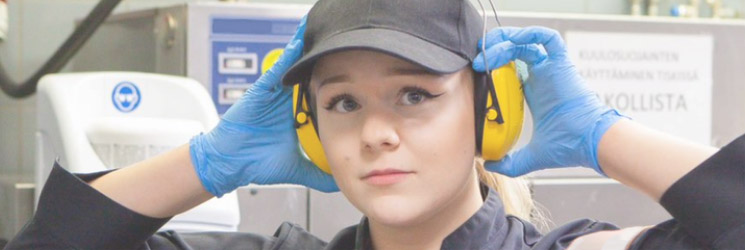

Working conditions
Training requirements for users of diisocyanates
Diisocyanates are used in a wide range of industries and applications, including the manufacture of polyurethane plastics. Many diisocyanates are sensitising and can cause conditions such as severe asthma to persons who are exposed to these substances at work.
Restriction decision on diisocyanates
The use of some chemicals may pose risks to humans or the environment. Chemicals regulation in the European Union enables the enactment of prohibitions or restrictions in such situations.
The European Commission has decided on a training requirement for diisocyanates for industrial and professional use. The restriction on diisocyanates and its justification are set out in Commission Regulation (EU) 2020/1149, which adds the restriction to Annex XVII, entry 74 of the REACH Regulation ((EU) 1907/2006).
Diisocyanates regulated by REACH
The REACH restriction defines diisocyanates as follows: O=C=N–R–N=C=O. In this definition, R is an aliphatic or aromatic hydrocarbon unit of unspecified length. The training requirement in REACH concerns diisocyanates with a concentration of over 0.1% by weight.
Below are examples of diisocyanates subject to REACH training requirements:
- MDI Methylene diphenyl diisocyanate
- TDI Toluene diisocyanate
- HDI 1,6-hexamethylene diisocyanate
- IPDI Isophorone diisocyanate
- NDI 1,5-naphthylene diisocyanate
Requirements set for the training
The REACH restriction imposes various requirements on the content of the training depending on the way a chemical is used. The restriction describes in detail what the training must include. The REACH Regulation further states that “Such training shall be conducted by an expert on occupational safety and health with competence acquired by relevant vocational training.”
General training is required for everyone who is subject to the obligation to training.
In addition, intermediate-level training is needed for the following uses:
- handling open mixtures at ambient temperature
- spraying in a ventilated spray booth
- application by roller and brush
- dipping and pouring
- mechanical post treatment (e.g. cutting) of not fully cured articles which are not warm anymore
- cleaning and waste
- any other uses with similar exposure through the dermal and/or inhalation route.
In addition to general and intermediate-level training, advanced training is needed for the following:
- handling incompletely cured articles (e.g. freshly cured, still warm items)
- foundry applications
- maintenance and repair of diisocyanate equipment
- open handling of warm or hot (> 45 °C) formulations
- spraying in open air, with limited or only natural ventilation (includes large industry working halls) and spraying with high energy (e.g. foams, elastomers)
- any other uses with similar exposure through the dermal and/or inhalation route.

